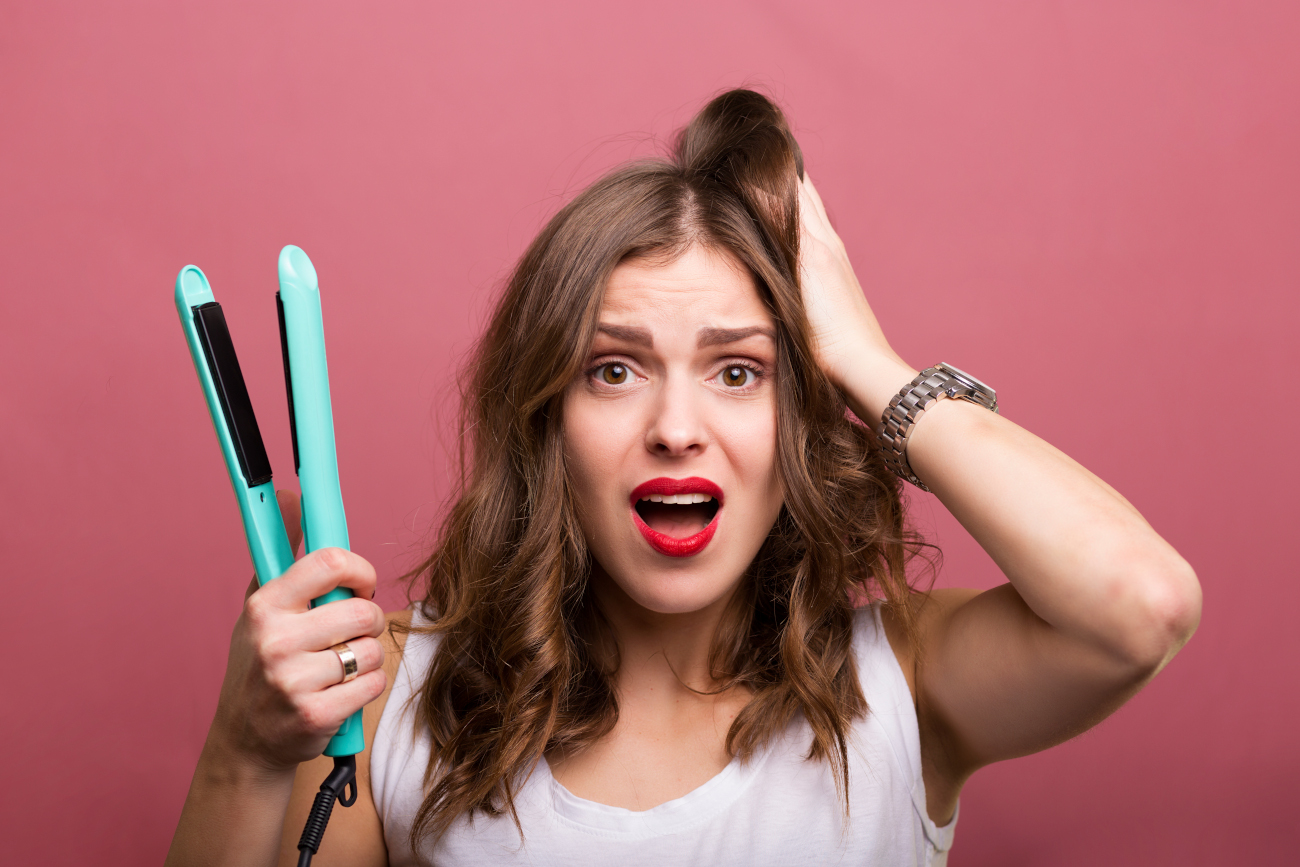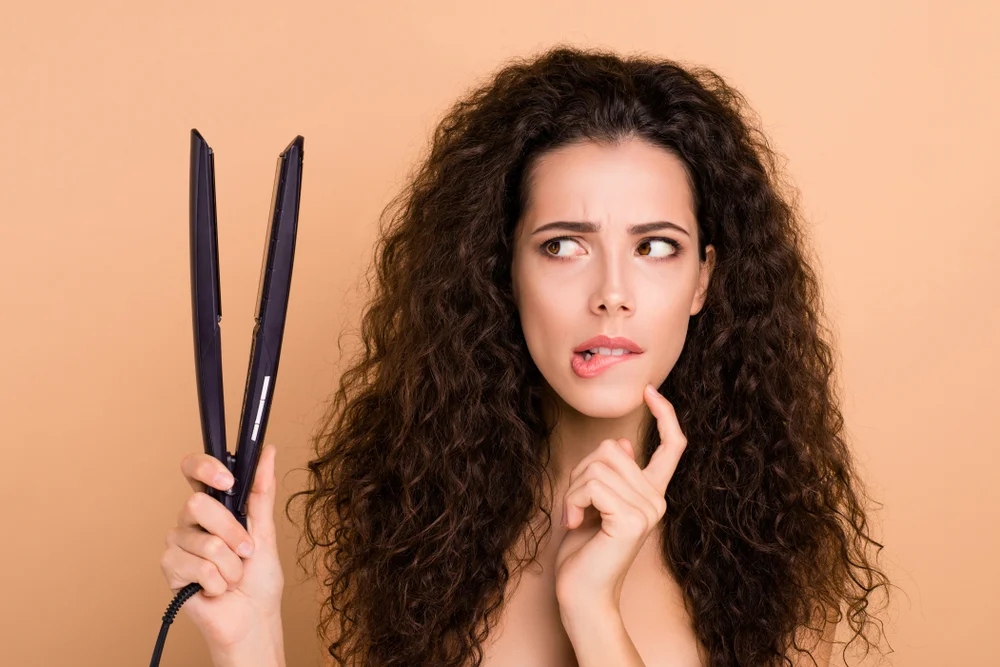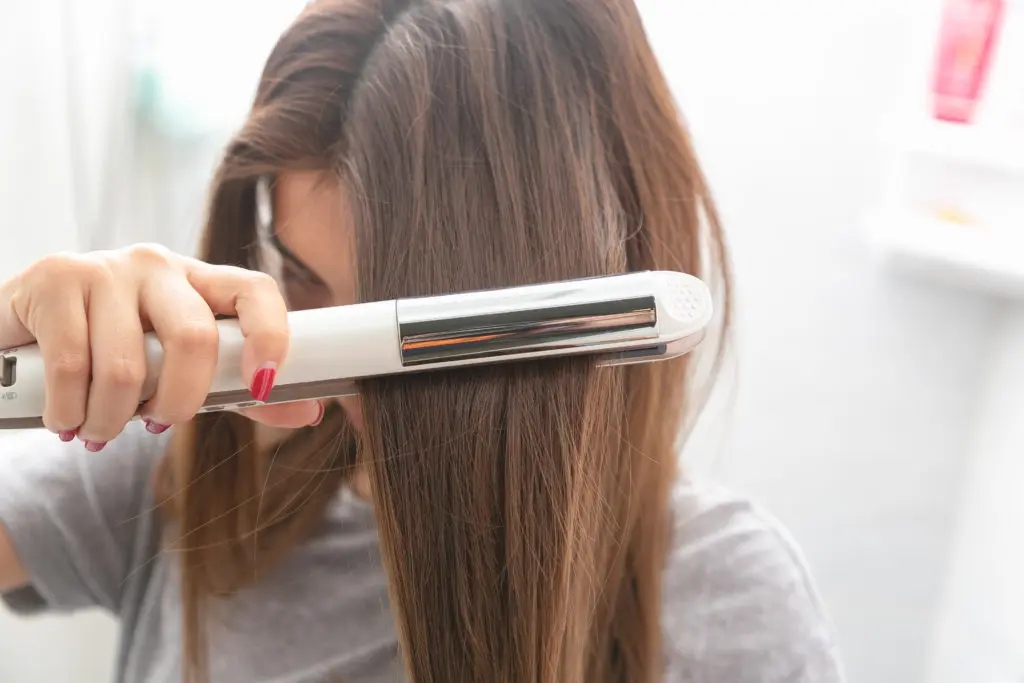Protecting Hair From Heat Damage - Essential Tips To Protect Your Hair
Discover effective strategies to protect your hair from heat damage. Keep your locks healthy and vibrant!
Author:James PierceReviewer:Karan EmeryFeb 27, 2024161 Shares32.1K Views

Protecting hair from heat damageis crucial for maintaining healthy, vibrant hair, especially in a world where heat styling tools like flat irons, curling wands, and blow dryers are commonplace. Excessive heat exposure can lead to dryness, breakage, split ends, and overall hair damage. However, with the right techniques and products, you can minimize the harmful effects of heat styling and keep your locks looking their best.
Understanding Heat Damage
Heat damageoccurs when high temperatures weaken the hair's protein structure, causing it to become brittle and prone to breakage. Prolonged or frequent use of heat styling tools can strip the hair of its natural moisture, leading to dryness and dullness.
Common Sources Of Heat Damage
Heat damage can result from various sources, including blow dryers, flat irons, curling irons, hot rollers, and even exposure to the sun. Additionally, chemical treatments like bleaching and perming can exacerbate heat damage by weakening the hair's structure.
Signs Of Heat Damage
Signs of heat damage include dryness, brittleness, split ends, frizz, and a lack of elasticity. Damaged hairmay also appear dull, lifeless, and difficult to style. It's essential to recognize these signs early to prevent further damage.
Here are 9 tips for Protecting hair from heat damage:
Hydrate Your Hair
Dehydration is the main outcome of excessive heat styling. Heat from the sun's UV rays, the water you use to wash your hair, or your preferred flat iron can dry out your strands, making your hair appear dull and brittle. Make sure you're hydrating your hair to counteract the drying effects of heat. Use hydrating shampoo and conditioner while taking a shower, and treat your hair with a deep-conditioning mask once a week.
Use A Clarifying Shampoo After Every Third Or Fourth Wash
Healthy hair starts with a good shampoo and conditioner combination. If you don't properly cleanse, hydrate, and condition your hair, nothing you do will matter. Shampoos and conditioners containing parabens, sulfates, and other chemicals that deplete your hair of essential oils and cause brittleness and dryness should be avoided.
Set The Temperature Of Your Tools Appropriately
Most of us frequently make the mistake of turning the heat up to high when using hot tools. No matter how much heat protectant is applied beforehand, this will accelerate the damage. While the ideal temperature depends on your hair type and texture, normal hair should be kept between 200 and 300°F. Keep it at 200°F or lower for people with fine hair.
Adhere To The "One And Done" Rule
When using heat styling tools on a particular section of hair, it's crucial to take into account not only the temperature setting but also the frequency of application. The "one and done" rule should generally be adhered to: just one pass over a section of hair at a time.
Even though it might appear that you're maintaining the direction or style of your hair, you might be doing more harm to the shafts of your hair. Try increasing the temperature a little bit if you discover that it takes multiple passes to get the desired look. Finding the lowest temperature setting that still permits you to style hair effectively without running the risk of heat damage should be your aim.
Get A Hair Cut
Your hair feels rough because of split ends, as anyone who has ever had heat damage to their hair can probably attest to. Hair strands that have frayed ends can take a variety of shapes, including the classic "Y" form, where the hair strand splits into two parts, as well as the "feather" and "tree branch" shapes, where the hair fiber splinters into multiple parts.
Split ends are unavoidable, but damage control can still be achieved with regular hair trims, which is something you should be doing anyway. To make sure you're getting rid of split ends from your mane, make a note of the dates you spend with a hairstylist you trust. By doing so, they may be kept from causing further harm by ascending the hair shafts.
Choosing The Right Heat Protectant Products
When selecting a heat protectant product, look for formulations that contain ingredients like silicones, which create a protective barrier on the hair's surface, and moisturizing agents like argan oil or coconut oil, which help retain moisture and prevent dryness.
Heatless Styling Alternatives
Embracing heatless styling alternatives can also help reduce heat damage while still achieving beautiful hairstyles. Options include air-drying your hair, using foam rollers or flexi-rods for curls, or experimenting with heatless curling techniques like braiding or twisting.
Preventing Sun Damage
In addition to heat styling tools, exposure to the sun's UV rays can also cause damage to the hair, leading to dryness, fading, and weakening of the hair shaft. Protect your hair from sun damage by wearing a hat or using a UV-protective hair product when spending extended periods outdoors.
Use Weekly Hair Masks To Nourish Your Hair
These amazing hair masks deeply condition and hydrate damaged hair, restoring moisture to the strands. Simply replace your regular conditioner once a week with a conditioning mask, then let it sit for a few minutes.
Recovering From Heat Damage
If your hair has already experienced heat damage, there are steps you can take to help repair and restore its health. This may include trimming away damaged ends, incorporating deep conditioning treatments into your routine, and being gentle with your hair to prevent further breakage.
Protecting Hair From Heat Damage - FAQs
How Does Heat Damage Affect Hair?
Heat damage weakens the hair's protein structure, leading to dryness, breakage, split ends, and overall hair damage.
How Can I Protect My Hair From Heat Damage?
You can protect your hair from heat damage by using heat protectant products, adjusting heat settings on styling tools, limiting heat exposure, and practicing healthy hair care habits.
How Often Should I Use Heat Styling Tools On My Hair?
It's best to limit the use of heat styling tools to no more than two to three times a week to minimize the risk of heat damage.
What Ingredients Should I Look For In Heat Protectant Products?
Look for heat protectant products that contain silicones, moisturizing agents like argan oil or coconut oil, and other nourishing ingredients to shield the hair from heat damage.
Can Heat Damaged Hair Be Saved?
Repairing damaged hair is almost impossible due to the irreversible alteration of the protein bonds and cuticles. Rather, the emphasis ought to be on hair maintenance in order to stop additional damage. The most drastic remedy is to chop off your hair and start over if it has sustained significant damage.
How Do You Rescue Heat Damaged Hair?
Make the switch to moisturizing or damage-repairing shampoos and conditioners, and make sure the products are paraben- and sulfate-free. Use hydrating products on your hair after you've showered, like leave-in conditioners and jojoba or argan oil.
How Do I Stop My Hair From Shedding From Heat Damage?
You can reduce the quantity of moisture that escapes from the hair shaft by using a heat protectant product before blow-drying and styling your hair. Aim to use your heat guns less often, and think about changing your hairstyle to go along with this. Think about applying a hair mask once or twice a week and leaving it on overnight.
What Is Best Heat Protectant For Hair?
Olaplex No.9 Bond Protector is the best heat protectant for hair.
What Are Some Healthy Hair Care Practices To Prevent Heat Damage?
Healthy hair care practices to prevent heat damage include regular trims, deep conditioning treatments, gentle detangling, protective hairstyles, and maintaining a balanced diet.
Conclusion
Protecting hair from heat damage is essential for maintaining healthy, lustrous locks. By following these tips and incorporating heat protectant products into your hair care routine, you can minimize the harmful effects of heat styling and keep your hair looking its best for years to come.

James Pierce
Author

Karan Emery
Reviewer
Latest Articles
Popular Articles

